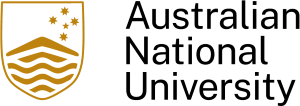How a student prize helped build a pathology workforce in the ACT

For many years the pathology profession in Canberra faced difficulties in recruiting staff. But a student prize, instituted at ANU almost 25 years ago, has played a role in building the field.
In 2005, changes to the medical curriculum, across Australia, meant fewer medical students were being exposed to pathology as a potential career pathway.
Jane Dahlstrom, Chair and Professor of Pathology at the Australian National University, and Senior Anatomical Pathologist at Canberra Health Services, explained, “The revised curriculum meant there was less focus on pathology content.”
“At the same time there was a critical workforce shortage in diagnostic pathology, further impacting pathology teaching.”
“To grow the workforce, I knew we needed to promote knowledge of and interest in pathology among students,” Professor Dahlstrom said.
“I approached our then Executive Director of ACT Pathology at Canberra Health Services, Professor Julia Potter, proposing we provide a prize to high achieving students. She strongly supported this.”
As a result, the ACT Pathology Year Two Student Prize was born.
“We’ve now also created a Year 4 student prize, generously sponsored by the ACT Cancer Council,” Professor Dahlstrom added.
The idea has paid off. The region currently has eight ANU medical graduates who are now pathologists, and more than 50% of current registrars training in pathology are ANU graduates.
The most recent recipient of the ACT Pathology Year Two Student Prize, student Ms Anna Peace, can attest that the course and the resulting prize have made her ponder pathology as a career option.
“There are many different specialities in pathology like hematology, immunology, microbiology, biochemistry and anatomical pathology.”
“The overview has piqued my interest. I could see how the hematology block, which looks at diagnoses of blood cancers, linked well with my love of molecular biology.”
"I'd love to do a rotation in pathology, something I would never have considered when I was first entering medical school.” .”
Ms Peace added, “I found oncology pathology particularly fascinating. It's one thing to read about tumours and cancers in textbooks but to see actual specimens - it takes learning to the next level.”
When asked what was the most enjoyable aspect of the pathology course offered in the Doctor and Medicine and Surgery program Ms Peace decisively said, “The teaching staff.”
“The pathology lecturers are all incredibly engaging and passionate and they're so generous with their time and experience.”
Ms Peace advised, “They're really invested in the students which makes a huge difference when you're trying to learn so many new things at once.”
“The teachers are Canberra Health Services staff, so they have their own positive experiences to share with us about the field. Many encouraged us to consider pathology as a career possibility.”
“I'd particularly like to thank Professor Dahlstrom for the prize and Dr Jo Morris, the acting Executive Director of ACT Pathology for donating the prize,” Ms Peace said.
